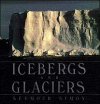Shrinking Glaciers Additional Information
Share this:
- Share via email (Opens in new window) Email
- Click to share on Facebook (Opens in new window) Facebook
- Click to share on X (Opens in new window) X
- Click to share on Pinterest (Opens in new window) Pinterest
- Click to share on Reddit (Opens in new window) Reddit
- Share to Google Classroom (Opens in new window) Google Classroom
- Click to print (Opens in new window) Print
To learn more about glaciers and climate change, go to www.toptotop.org/climate/glaciers.php (TOPtoTOP Global Climate Expedition).
You can learn more about types of glaciers at pubs.usgs.gov/of/2004/1216/glaciertypes/glaciertypes.html (U.S. Geological Survey).
Learn about Keith Echelmeyer and his research on melting glaciers at www.uaf.edu/seagrant/NewsMedia/02ASJ/07.19.02melting-glaciers.html and www.eurekalert.org/pub_releases/2002-07/uoaf-stp071502.php (University of Alaska, Fairbanks).
Information about Shishmaref, Alaska, is available at www.arctic.noaa.gov/detect/human-shishmaref.shtml(NOAA).
A report that the Arctic may become ice-free in the summer within the next century can be found at www.eurekalert.org/pub_releases/2005-08/uoa-aoc082205.php (University of Arizona).
Sohn, Emily. 2005. Arctic algae show climate change. Science News for Kids (March 9). Available at http://www.sciencenewsforkids.org/2005/03/arctic-algae-show-climate-change-2/.
______. 2004. A change in climate. Science News for Kids (Dec. 8). Available at http://www.sciencenewsforkids.org/2004/11/a-change-in-climate-2/.
______, 2004. Recipe for a hurricane. Science News for Kids (Sept. 29). Available at http://www.sciencenewsforkids.org/2004/09/recipe-for-a-hurricane-2/.
______, 2004. A dire shortage of water. Science News for Kids (Aug. 25). Available at http://www.sciencenewsforkids.org/2004/08/a-dire-shortage-of-water-2/.
Books recommended by SearchIt!Science:
 |
Icebergs and Glaciers— Seymour Simon
Published by William Morrow/HarperCollins, 1987.
The giant rivers of ice called glaciers move ever so slowly, but they are powerful enough to grind and crush everything in their paths. The land is carved and shaped as they move. Large pieces of ice that break away from glaciers are called icebergs. They can be 80 to 100 feet high and several miles long! Seymour Simon’s exploration of the world of ice includes beautiful photographs and a discussion of how glaciers are formed, how they move, and how they alter the land’s shape. |
Power Words
glacier A large mass of ice flowing very slowly through a valley or spreading outward from a central point. Glaciers form over many years from packed snow in areas where snow piles up faster than it melts. A glacier is always moving.
During the last Ice Age, some 10,000 years ago, much of North America was covered by glaciers that were over a mile thick. South America, by contrast, did not get covered by glaciers except in the Andes mountains.
global warming A rise in the average temperature of the Earth’s atmosphere. Many scientists believe that global warming is caused by the release of greenhouse gases. Global warming is believed to be capable of causing major changes in weather patterns.
greenhouse effect The trapping of the Sun’s heat in the Earth’s atmosphere. The greenhouse effect is caused by the presence of greenhouse gases in the atmosphere. Many scientists believe it is the main cause of global warming.
greenhouse gas A gas in the atmosphere that makes the greenhouse effect worse. Carbon dioxide, water vapor, and methane are greenhouse gases.
Copyright © 2002, 2003 Houghton-Mifflin Company. All rights reserved. Used with permission.
